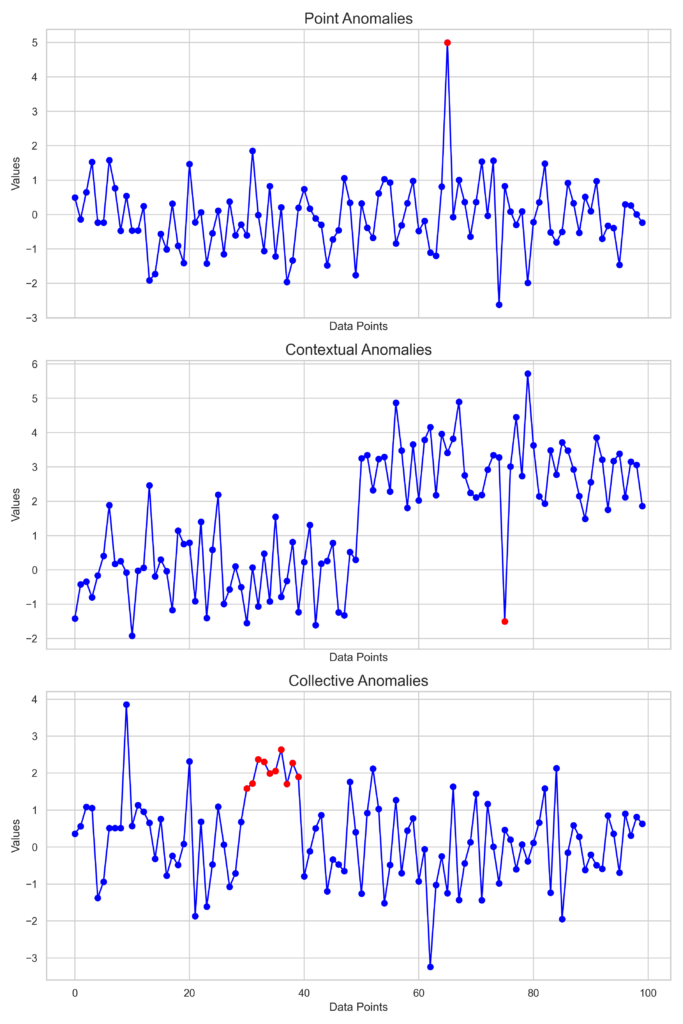Introduction to Anomaly Detection and Predictive Maintenance
In today’s competitive industrial landscape, manufacturing companies need to ensure maximum uptime of their equipment while minimizing unexpected downtime and maintenance costs. Anomaly detection for predictive maintenance has emerged as a vital tool to achieve this goal. In this article, we will explore what anomaly detection and predictive maintenance are and how they can be used to optimize manufacturing processes.
What is Anomaly Detection?
Anomaly detection is a process of identifying unusual patterns or behaviors in data that deviate significantly from the norm. These anomalies, often referred to as “outliers,” can indicate potential issues or faults within the system. By detecting anomalies early, companies can take preventative action before minor issues escalate into costly equipment failures or production downtime.
What is Predictive Maintenance?
Predictive maintenance (PdM) is a proactive approach to equipment maintenance that uses data analysis, machine learning, and other advanced techniques to predict when a machine or component is likely to fail. This allows organizations to schedule maintenance only when necessary, reducing downtime and maintenance costs while improving overall operational efficiency.
Types of Anomalies in Industrial Manufacturing
To effectively implement anomaly detection in predictive maintenance, it’s crucial to understand the different types of anomalies that may arise in industrial manufacturing:
- Point Anomalies: These are single data points that significantly deviate from the expected pattern or distribution. For example, a sudden spike in temperature or vibration in a machine may indicate a malfunction.
- Contextual Anomalies: These anomalies are unusual when compared to their surrounding data points within a specific context. For instance, a motor’s energy consumption may appear normal when viewed independently but may be considered anomalous when compared to its performance during similar operating conditions in the past.
- Collective Anomalies: These involve a group of data points that, when considered collectively, indicate an abnormal pattern or behavior. An example might be a series of sensor readings that suggest a gradual decline in machine performance over time.

Anomaly Detection Techniques
There are several techniques used for detecting anomalies in industrial manufacturing. Some of the most common methods include:
- Statistical Methods: These involve using statistical techniques like standard deviation, control charts, and hypothesis testing to identify data points that deviate significantly from the expected behavior.
- Machine Learning Techniques: Algorithms such as clustering, classification, and regression can be used to model the normal behavior of a system and flag data points that don’t conform to this pattern.
- Deep Learning Approaches: Techniques like autoencoders and recurrent neural networks (RNNs) can be employed to analyze complex, high-dimensional data and uncover hidden patterns indicative of anomalies.
Integrating Anomaly Detection into Predictive Maintenance
Implementing anomaly detection as part of a predictive maintenance strategy involves several steps:
- Data Collection and Pre-processing: Collect and preprocess data from various sources, such as sensors, maintenance logs, and production records. This may involve cleaning, normalization, and feature extraction to prepare the data for analysis.
- Model Training and Validation: Train and validate the chosen anomaly detection model using historical data. This process helps to fine-tune the model’s parameters and ensures its effectiveness in detecting anomalies in real-world conditions.
- Real-time Anomaly Monitoring: Deploy the trained model to monitor equipment and systems in real-time, flagging any detected anomalies for further investigation or maintenance action.
Benefits of Anomaly Detection for Predictive Maintenance
Incorporating anomaly detection into predictive maintenance offers several benefits, including:
- Reduced Downtime and Maintenance Costs: By identifying potential issues early, maintenance can be performed proactively, preventing unplanned downtime and reducing overall maintenance expenses.
- Improved Operational Efficiency: Anomaly detection helps to optimize the performance of equipment and processes by identifying inefficiencies and areas for improvement.
- Enhanced Safety and Risk Management: Detecting anomalies in real-time enables organizations to address safety hazards and manage risks before they escalate into serious incidents.
Challenges and Future Directions
While anomaly detection has shown promise in improving predictive maintenance, several challenges remain:
- Data Quality and Availability: The effectiveness of anomaly detection models depends on the availability and quality of data. Ensuring accurate, complete, and timely data collection is essential for successful implementation.
- Model Interpretability and Explainability: As machine learning and deep learning models become more complex, understanding and explaining their decision-making processes can be difficult. Developing more interpretable models is crucial for gaining stakeholder trust and ensuring regulatory compliance.
- Scalability and Integration: Integrating anomaly detection systems into existing industrial processes can be challenging, particularly when dealing with legacy equipment and infrastructure. Developing scalable solutions that can be easily integrated into various manufacturing environments is vital for widespread adoption.
Conclusion: The Value of Anomaly Detection in Predictive Maintenance
Anomaly detection has emerged as a powerful tool for enhancing predictive maintenance in industrial manufacturing. By identifying unusual patterns and behaviors in data, organizations can proactively address potential issues before they escalate into costly equipment failures or production downtime. As technology continues to advance, we can expect to see even more sophisticated and scalable solutions that will further improve the effectiveness of anomaly detection in predictive maintenance.
Don’t let unexpected equipment failures and downtime hold your manufacturing operations back! Ready to get started? Contact us sales@empiric.io




Your writing is a true testament to your expertise and dedication to your craft. I’m continually impressed by the depth of your knowledge and the clarity of your explanations. Keep up the phenomenal work!